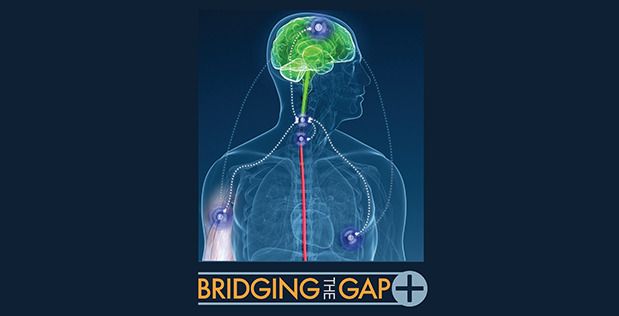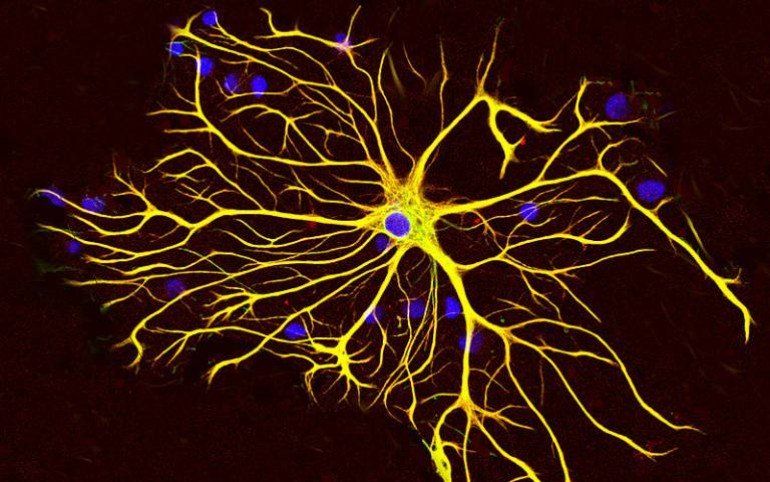These findings represent a bridge in physics, AI and neuroscience, and has the potential to advance on-the-spot decision making in AI.



Pilots display a different pattern of functional connectivity in the brain, according to new research conducted in China. The new studies examined interactions and synchronized activity between different areas of the brain, and the findings suggest that pilots tend to have enhanced cognitive flexibility compared to their non-flying counterparts.
“Civil aviation is a distinctive career. Pilots work in a complex, dynamic information environment. They must be aware of all the relevant information regarding this environment and recognize their meaning and importance,” said the authors of the new research in an article published in PLOS One.
Because of the cognitive demands placed on pilots, the researchers hypothesized that they would display a different pattern of brain connectivity compared to non-pilots.

A group of researchers from the Institute of Neurosciences UMH-CSIC, in Alicante, led by Dr. Eloísa Herrera, has discovered a genetic program essential for the formation of bilateral circuits, such as the one that makes possible 3D vision or the one enabling motor coordination. The finding, carried out in mice, is published today in Science Advances.
This new study not only clarifies how images are transmitted from the retina to the brain in order to see in 3D, but also helps us to understand how laterality is established in other neuronal circuits, such as the one that allows us to coordinate movements at both sides of the body, Dr. Herrera explains.
The work also reveals the important role of a protein known as Zic2 in the regulation of a signaling pathway called Wnt, which is fundamental for the correct development of the embryo and is highly conserved among species, from fruit flies to humans, including mice, in which this study has been carried out.

AR has been a bit of a fad in recent days. However, I personally believe that it will be an integral part of our future lives- but in the form of neural implants rather than glasses or contact lenses.
Discord Link: https://discord.gg/brYJDEr
Patreon link: https://www.patreon.com/TheFuturistTom
Please follow our instagram at: https://www.instagram.com/the_futurist_tom
For business inquires, please contact [email protected]

Summary: Astrocytes are involved in regulating inhibitory synapses by binding to neurons through the NrCAM adhesion molecule.
Source: Duke University
In the orchestra of the brain, the firing of each neuron is controlled by two notes–excitatory and inhibitory– that come from two distinct forms of a cellular structure called synapses. Synapses are essentially the connections between neurons, transmitting information from one cell to the other. The synaptic harmonies come together to create the most exquisite music–at least most of the time.

“In our current study we were able to uncover important limitations for the use of metformin as longevity medicine,” says Dr. Ermolaeva. In contrast to the positive longevity effects in young organisms that received metformin, lifespan is shortened through metformin intake at an older age. “Previous studies that provided evidence of an extended longevity by metformin usually examined animals treated with metformin from young adult or middle age until the end of life. In contrast, we have looked at treatment windows covering the entire life span, or restricted to early life or to late life”. The study also utilized a human cell culture model of replicative aging to assess human responses to metformin at a cellular level and compare them to organismal responses of the worms.
**Metformin longevity benefits are reversed with age**
The research team led by Dr. Ermolaeva found that the very same metformin treatment that prolonged life when C. elegans worms were treated at young age, was highly toxic when animals of old age were treated. Up to 80% of the population treated at old age were killed by metformin within the first 24 hours of treatment. Consistently, human primary cells demonstrated a progressive decrease in metformin tolerance as they approached replicative senescence. The researchers were able to link this detrimental phenotype to the reduced ability of old cells and old nematodes to adapt to metabolic stressors like metformin. Under these circumstances, the exact same dose of the drug that increased longevity of young-treated organisms by triggering adaptive stress responses was harmful in animals treated at old age, which were unable to activate such protective signals.
Metformin is a common type 2 diabetes drug. Recently, it was found to extend life span of young non-diabetic animals but the responses of older organisms to metformin remain unexplored. Researchers at the Leibniz Institute on Aging—Fritz Lipmann Institute (FLI) in Jena, Germany, and the Friedrich Schiller University Jena found that mitochondrial dysfunction abrogates metformin benefits in aged C. elegans and late passage human cells. Moreover, the same metformin regime that prolongs the lifespan of young nematodes was toxic in old animals by inducing deleterious metabolic changes. These findings suggest that aging sets a limit for the health span benefits of metformin outside of diabetes.
While people today are getting older and older, diseases that are associated with age (e.g. cardiovascular diseases, cancer, dementia and diabetes) are also increasing. Reaching late life while staying healthy is of high priority. Recently, the drug metformin, which has been used for decades to treat patients suffering from type 2 diabetes, was linked to the reduced risk of cancer development and showed potential to alleviate cardiovascular diseases in humans. Furthermore, a life-prolonging effect of metformin has recently been shown in mice, flies and worms. So, does this make metformin the new miracle drug to prolong life and even delay aging-associated diseases?
The first clinical testing of a potential life-prolonging effect of metformin in aged humans without diabetes has been initiated by the American Federation for Aging Research (AFAR). However, the long-term effects of metformin in a non-diabetic cohort at different age have not been investigated yet. Researchers at the Leibniz Institute on Aging—Fritz Lipmann Institute (FLI) in Jena, and their colleagues from the Friedrich Schiller University Jena (FSU), Germany, have now addressed these questions. They used the nematode C. elegans and human primary cells to investigate the metabolic response of young and old non-diabetic organisms to metformin treatment in detail. The current study has now been published in the journal Nature Metabolism.


Spinal cord injury (SCI) is of significant concern to the Department of Defense. Of the 337,000 Americans with serious SCIs, approximately 44,000 are veterans, with 11,000 new injuries occurring each year.1 SCI is a complex condition – the injured often face lifelong paralysis and increased long-term morbidity due to factors such as sepsis and autonomic nervous system dysfunction. While considerable research efforts have been devoted toward restorative and therapeutic technologies to SCIs, significant challenges remain.
DARPA’s Bridging the Gap Plus (BG+) program aims to develop new approaches to treating SCI by integrating injury stabilization, regenerative therapy, and functional restoration. Today, DARPA announced the award of contracts to the University of California-Davis, Johns Hopkins University, and the University of Pittsburgh to advance this crucial work. Multidisciplinary teams at each of these universities are tasked with developing systems of implantable, adaptive devices that aim to reduce injury effects during early phases of SCI, and potentially restore function during the later chronic phase.
“The BG+ program looks to create opportunities to provide novel treatment approaches immediately after injury,” noted Dr. Al Emondi, BG+ program manager. “Systems will consist of active devices performing real-time biomarker monitoring and intervention to stabilize and, where possible, rebuild the neural communications pathways at the site of injury, providing the clinician with previously unavailable diagnostic information for automated or clinician-directed interventions.”


Circa 2011
There is a physical and electrical disconnect between the world of electronics and the world of biology. Electronics tend to be rigid, operate using electrons, and are inherently two-dimensional. The brain, as a basis for comparison, is soft, operates using ions, and is three-dimensional. Researchers have therefore been looking to find different routes to create biocompatible devices that work well in wet environments like biological systems. In an exiting new development, researchers from North Carolina State University have fabricated a memory device that is soft, entirely based on liquid-based matter, and functions well in wet environments — opening the door to a new generation of biocompatible electronic devices.